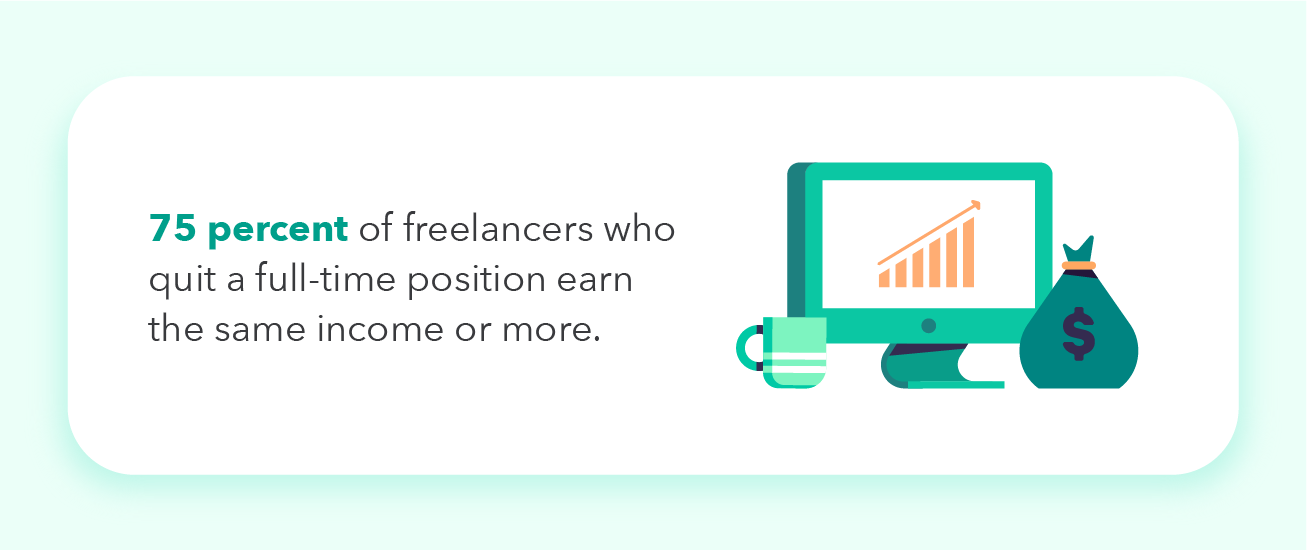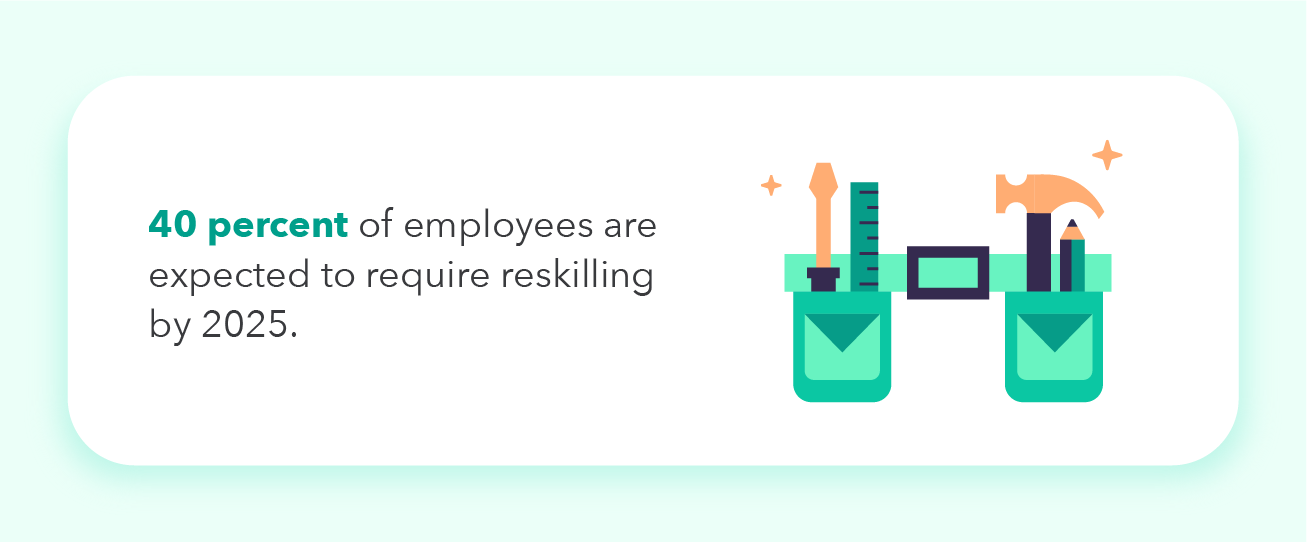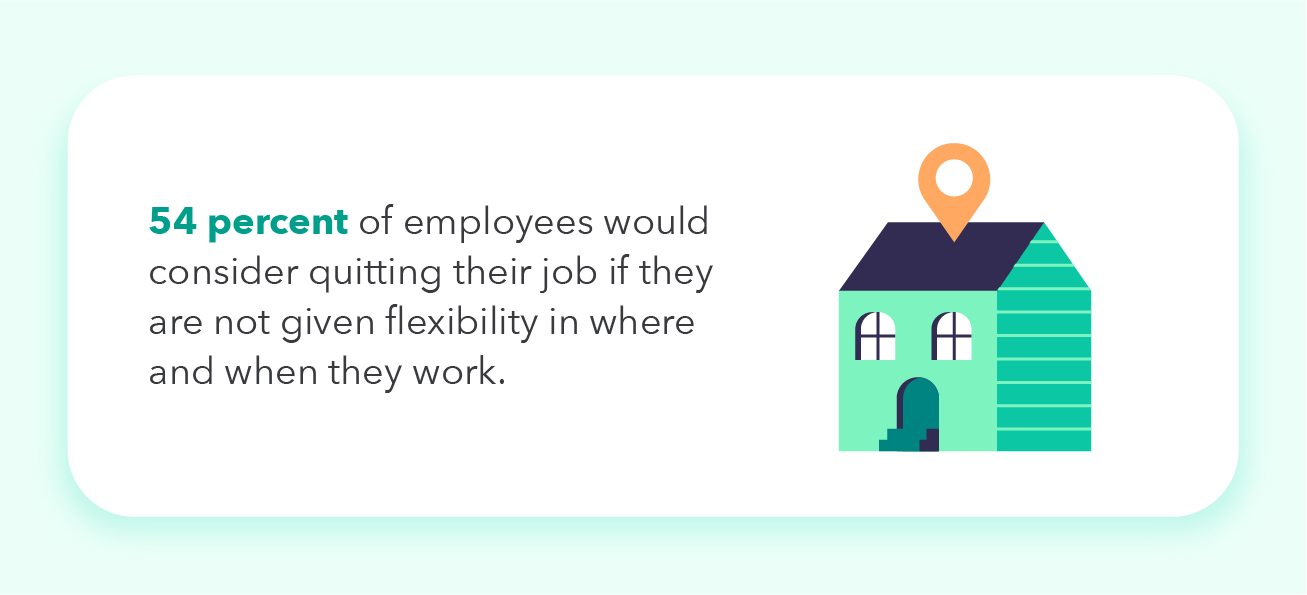Everyone wants a job that will provide them with stability and success, but finding one is easier said than done. The workforce is continually evolving, making it difficult to predict which jobs will still exist – and be well-paid – 30 years from now. Fortunately, career trends can help anticipate what the future holds or provide a rough notion of what to expect.
Investing time in your professional development should be approached with the same caution that you would use to invest your personal savings. Identifying where money is flowing will allow you to concentrate your efforts in the areas most likely to result in the achievement of your financial objectives. For actionable job-search advice, go straight to the infographic.
What Exactly Are Career Trends?
Career trends describe changes in job markets pertaining to specific abilities. These developments can provide new job opportunities or cause particular markets to dry up completely. For example, the modern shift toward renewable energy has resulted in a surge in solar panel and wind turbine job estimates. Tracking current work trends and projecting what the future holds can help you stay on track in your professional and financial development.
The Most (and Least) Sought-After Employment Markets

Industries are determined by their location just as much as they are by their speciality. Both characteristics have a significant impact on an industry's current and future demand. Understanding which job markets are expanding and where they are headed is critical for both students planning their studies and current professionals planning their careers.
1. E-commerce hiring increased by 73% between April and October 2020. (LinkedIn)
2. Despite earning six-figure wages, just 57 per cent of software engineers report being extremely satisfied with their professions. (Payscale)
3. Loan and mortgage holdings increased by 59% between 2019 and 2020. (LinkedIn)
4. Sixty-five per cent of social workers are satisfied with their careers, despite earning a median pay of $33,700. (Payscale)
5. 83 percent of surgeons are satisfied with their professions. (Payscale)
6. Healthcare support worker job vacancies have surged by 34% since 2019. (LinkedIn)
7. Wind turbine service technicians have the highest projected growth rate until 2030, followed by nurse practitioners and solar photovoltaic installers. (Labor and Statistics Bureau)
Trends in Employee Relocation
Following population fluctuations in different cities and states can be a good predictor of whether an industry is growing or stagnating. If you are considering relocating, consider the areas that are experiencing the biggest population growth. This can disclose the finest places to live and work, as well as the best places to invest in real estate.
8. The South and West of the United States were home to 14 of the 15 fastest expanding cities in the country. (U.S. Census Bureau)
9. Between May 2020 and April 2021, Austin, TX acquired 217 tech workers for every 10,000 residents. (LinkedIn)
While California is the most populated state, its growth rate has dropped to 6.1 percent between 2010 and 2020. (U.S. Census Bureau)
11. Between 2010 and 2020, Florida's population expanded by 14.6 per cent. (U.S. Census Bureau)
12. Between 2010 and 2020, the population of Texas expanded by 15.9 per cent. (U.S. Census Bureau)
Resignations are New Job Trends

The pandemic threw a wrench in practically every business's plans around the world. Employers have been trying to retain employees and attract new talent as a result of staff shortages. This resulted in a seemingly overnight shift in power dynamics between employers and employees, with potential employees having the upper hand.
Employees began to resign in such large numbers that the phenomenon became known as “The Great Resignation.” Employers are increasingly under pressure to raise compensation and restructure business culture in order to attract and retain top employees.
13. 25% of Millennials believe it is acceptable to leave a job during the first 12 months of employment. (Source: Manpower Group)
14 88 per cent of IT CEOs report higher-than-average turnover rates. (PwC)
15. Voluntary resignations account for 60 to 70% of total staff turnover. (ADP)
16. The average monthly employee turnover rate in the United States is 5%. (ADP)
17. According to 55% of professionals, excessive staff turnover will persist in 2022. (((((((((((((((((((((
18.86% of workers believe they are not heard fairly or equally. (UKG)
19. By 2021, 52 per cent of US workers planned to change jobs. (Quick Company)
20. Companies that make employees feel heard are 88 percent more likely to be financially successful. (UKG)
21. Almost 30% of job candidates report quitting a job within 90 days of starting. 43 per cent say the position did not live up to their expectations. (Jobvite)
Because of a lack of flexibility in their jobs, 22.18 per cent of hourly workers departed. (Choice of Work)
At least 24% of Americans have been bullied at work. Moreover half did not report it. (Jobvite)
Instead of discussing concerns with their supervisors, 24.34 per cent of employees would switch teams or resign. (UKG)
25.44 percent of workers have plans to quit their jobs. (Quick Company)
Employees' bad reviews caused 26.22 per cent of candidates to decline employment offers. (Jobvite)
The Future is Freelance

A growing number of workers are abandoning traditional forms of employment in favour of the possibility to work for oneself. Freelancers are no longer reliant on personal ties to obtain job contracts, thanks to the internet marketplace. They can submit their portfolios online, search for freelance jobs on internet job boards, or work part-time in the ever-expanding gig economy.
Employers see this trend as mutually advantageous because it relieves them of the burden of paying the salary and perks of a permanent hire when the workload does not warrant one.
27.75 percent of freelancers who leave a full-time job earn the same or more. (Upwork)
Due to personal circumstances and duties, 28.46 percent of freelancers feel they are unable to work in traditional occupations. (Forbes)
29.71 percent of decision-makers wish to keep or expand their freelance contracts. (Upwork)
30. The typical freelancer is 40 years old, which is two years younger than the average traditional worker. (Forbes)
31.25 million non-tech employment may be turned into freelance opportunities. (Upwork)
32. Skilled services account for the single largest group of freelancers, accounting for 45 per cent. (Forbes)
Females account for 33% of all freelancers. 6% less than the general labour force. (Statista)
34.64 percent of workers want part-time work to supplement their income. (Deloitte)
The performer considers 35.22 percent of side hustles to be a passion project. (Jobvite)
One in every six conventional workers wishes to be self-sufficient. (McKinsey)
37.31% of job applicants have a side hustle (Jobvite)
According to 38.51% of freelancers, no amount of money could persuade them to join a typical job. (Forbes)
39 59 percent of side hustles are motivated by a desire for money. (Jobvite)
Recruitment and Hiring Trends

As job patterns shift, so do the demands. Potential employees might place higher demands on wages, perks, and corporate responsibility in this seller's market for labour.
40. It takes an average of 42 days to fill an open post. Top applicants are only available for 10 days. (Zippia)
Before applying for a job, 41.75 percent of job seekers study a company's reputation. (LinkedIn)
42. Only 7% of applications come from references. (GoRemotely)
43.67 percent of job seekers believe that money is the most important element in accepting a job offer. (Zippia)
Employee referrals are valued by 44.82 percent of employers over all other sources. (GoRemotely)
45.70% of job searchers want recruiters to give wage ranges in their initial contact. (Zippia)
Referral applicants, according to 46.70 per cent of companies, suit company culture better than non-referred individuals. (GoRemotely)
47. Eighty-two per cent of the time, companies hire the wrong person for a job. (Gallup)
The Effect of COVID-19 on Recruitment
COVID-19 flipped the job market on its head. Employers and employees alike today have different expectations about what they expect from one another. Workplace safety is on everyone's mind, and it's having an effect on recruitment.
Employees are needed to be vaccinated in 48.29 per cent of cases. (Gallup)
Vaccine requirements are supported by 49.30 per cent of executives in non-health-related firms. (PwC)
Vaccination mandates for government workers are supported by 50-60% of Americans. (Gallup)
Vaccine mandates are supported by 51.43 per cent of healthcare executives. (PwC)
52.58 per cent of Americans prefer vaccination standards or weekly testing in organisations with 100 or more employees. (Gallup)
Employment Projections for Essential Skills

The current skilled labour shortage may have the largest influence on employee-employer relations. This is happening across different markets, and businesses must make sacrifices for their employees in order to retain top talent. In the future, there will be a larger emphasis on employee upskilling.
After their first post-college job, 52.9 percent of Americans aged 25–44 changed careers. (edX)
54.83% of superintendents report difficulty in hiring suitable teachers. (Multiple Interview Streams)
Due to a shortage of suitable applicants, 55.89 percent of manufacturers had empty vacancies. (Deloitte)
56. Half of 25–44-year-olds in the United States say that school requirements prevent them from advancing in their careers. (edX)
The greatest barrier to filling unfilled positions, according to 57.45 percent of professionals, is a lack of qualified skills. (((((((((((((((((((((
By 2025, it is predicted that 58.40 percent of employees would need to be reskilled. (PwC)
59% of college graduates between the ages of 25 and 44 do not use their major at employment. (edX)
60. The value of the soft skills training market is predicted to treble by 2026, to an estimated $43 billion. (Group IMARC)
Soft skills training has been shown to enhance productivity by 12%. (Michigan State University)
90% of mid- to high-wage positions demand digital capabilities. (The Brookings Institution)
Automation’s Impact on Job Outlooks

As automated technology advances, it becomes more cost-effective for businesses to implement in the workforce. Automation may be more practical than human labour in certain industries. In some areas, automation is being used to increase the efficiency of human workers.
63.80% of workers believe their jobs will still exist in 50 years. (Source: Pew Research Center)
Because of COVID-19, 64.52 per cent of organisations have accelerated their AI ambitions (PwC)
65.17 percent of workers in manual labour jobs are concerned about automation. (Source: Pew Research Center)
66. Between 1990 and 2015, the cost of robots fell by more than half, but labour costs climbed by more than a hundred per cent. (Visual Capitalist) Formalized paraphrase
67.76 per cent of businesses are just breaking even on their existing AI investments. (PwC)
Within the next 50 years, 68.65 percent of Americans predict robots and computers will perform much of the labour currently performed by humans. (Source: Pew Research Center)
69. About 85 per cent of customer service contacts are automated. (Gartner)
70% of businesses have deployed AI in limited capacities. (PwC)
71. Investments in hyper automation are expected to reach $596.6 billion by 2022. Over the last two years, there has been a more than $100 billion increase. (Gartner)
Remote Career Trends

The rise of COVID-19 coincided with the advent of remote work, which fundamentally altered office culture. Many organisations gave their employees the option to work from home, either part-time or full-time, out of need, with some companies closing their physical offices permanently. While remote employment allows firms to be more flexible, it can also introduce new challenges.
Millennials seek a flexible work schedule in 72.79 per cent of cases. (Source: Manpower Group)
73% of employees are willing to give up one job benefit in return for a more flexible work environment. This benefit could include healthcare, bonuses, or paid time off. (WeWork)
If they are not offered flexibility in where and when they work, 74.54 percent of employees would consider abandoning their employment. Ernst and Young
75.28 per cent of executives and staff are permanently changing where they work. (PwC)
In 2022, 76.31% of workers worldwide are predicted to be hybrid or entirely remote. (Gartner)
77. It is estimated that 40.7 million Americans will be disconnected during the next five years. (Upwork)
78.64 percent of employees are willing to pay for their own office space. Only 49 per cent of low-income earners are willing to pay, compared to 80 per cent of high-income earners. (WeWork)
The main challenge of hybrid work settings, according to 79.36% of executives, is the loss of corporate culture. (PwC)
Prior to COVID-19, 80% of employees worked remotely. After COVID-19, an estimated 48% will continue to work remotely in some manner. (Gartner)
The Importance of Technology in Employment Markets

Technology will always be a driver of employment change. While previous generations were more resistive to such change, present generations appear to be more tolerant. Many employees actively want to incorporate new technology into their jobs and expect their employers to accommodate them.
81.85% of workers want technology to advise them on their professional path. This includes identifying areas for improvement and making recommendations for next measures. (Oracle)
After COVID-19, 82.81 percent of talent professionals plan to continue conducting virtual interviews (LinkedIn)
83.55 percent of employees are more inclined to stay with a company that employs modern technologies that promote professional advancement. (Oracle)
84. Tech advancement in all areas is expected to stall by 2030 due to a labour shortage. (((((((((((((((((((((
85.16 percent of businesses utilise technology to monitor employees more regularly. Virtual clock in/out systems, computer activities, emails, and communication are all examples of this. (Gartner)
How Social Media Impacts Future Job Outlooks

The distinction between personal and professional social media use is becoming increasingly blurred. It is being used by both employers and employees to uncover new opportunities and screen possible partnerships. It's evident that maintaining a clean social media presence will continue to be a priority for professionals in the future.
86.21 per cent of hiring managers are unlikely to consider a candidate who does not have a social media presence. (Express Professionals)
87. Companies that are publicly (88%) or privately (89%) held are more likely to recruit through social media than government entities. (SHRM)
Employers use social media to study job seekers in 88.67% of cases. (Express Professionals)
Social media is used by 89.84 per cent of organisations to recruit. (SHRM)
Because of something on their social media, 90.54 per cent of companies did not hire an applicant. (CareerBuilder)
LinkedIn is used by 91.51% of college grads. (Source: Pew Research Center)
92. LinkedIn outperforms its competition in terms of visitor-to-lead conversions. (HubSpot)
93. Including a profile photo on your LinkedIn page improves the likelihood of a profile being seen 14 times. (LinkedIn)
94. LinkedIn accounts for roughly 46 per cent of a company's social media traffic. (Statusbrew)
95. Sales teams that use social selling are 15% more likely than non-social selling teams to meet quotas. (Aberdeen Group) Formalized paraphrase
Employment Trends in Healthcare

While the healthcare workforce did not experience the tremendous layoffs seen by others as a result of COVID-19, they were profoundly harmed in other ways. Long work hours and poor working conditions have resulted in contemporary labour shortages. In addition, in an industry where shortages are already expected in the future, companies are being pushed to address issues in order to avert potential calamities.
Since February 2020, 96.18 per cent of healthcare personnel have abandoned their jobs. (Morning Consultation)
97. Full-time nurses are increasingly becoming travelling nurses in order to get weekly salary raises in excess of $5,000. (Marketplace)
98. It is anticipated that there would be a shortage of between 8,700 and 43,100 primary care physicians by 2030. (AAMC)
Staff shortages have impacted 99.8 per cent of healthcare employees. (Morning Consultation)
100. Hospital employment declined by about 94,000 positions between February 2020 and September 2021. (Altarum)
101.64 percent of doctors believe the internet of things could reduce the strain on healthcare professionals. (Advice on Policy)
By 2030, two out of every five active physicians will be 65 or older. (AAMC)
103.19 percent of healthcare professionals are dissatisfied with how their companies communicate, offer poor pay, or provide PPE. (Morning Consultation)
104. Healthcare specialists are expected to be in short supply between 33,500 and 61,800 by 2030. (AAMC)
Although no one can predict the future, examining current career trends might help you position yourself for success in your job search. And, if your career advancement will necessitate returning to school, begin budgeting for the future expenses now. Proper planning can make dealing with unanticipated obstacles much easier.
The post Career Trends: 100+ Workforce Statistics for 2022 appeared first on MintLife Blog.
The post Career Trends: 100+ Workforce Statistics for 2022 appeared first on https://gqcentral.co.uk





Comments are closed